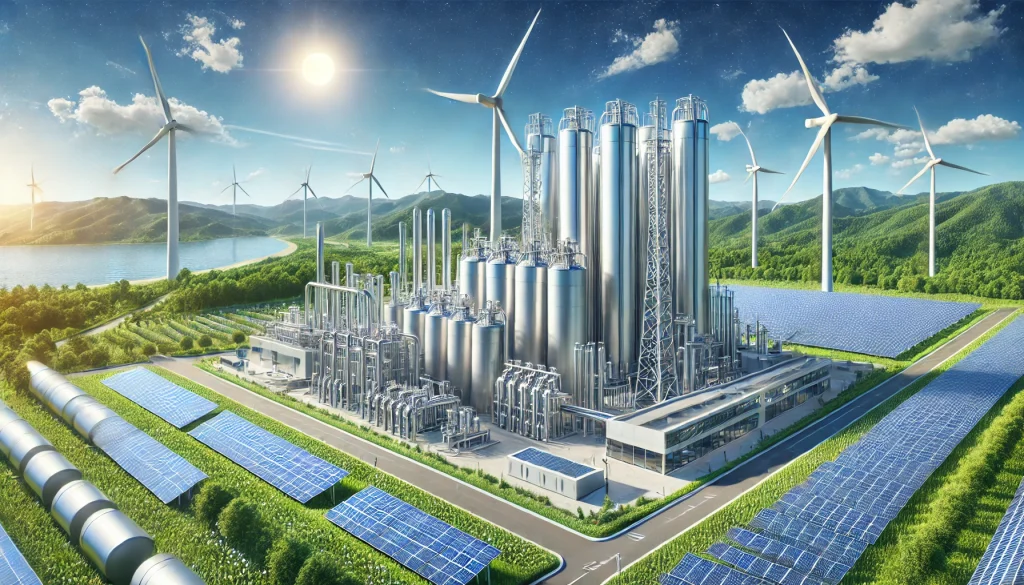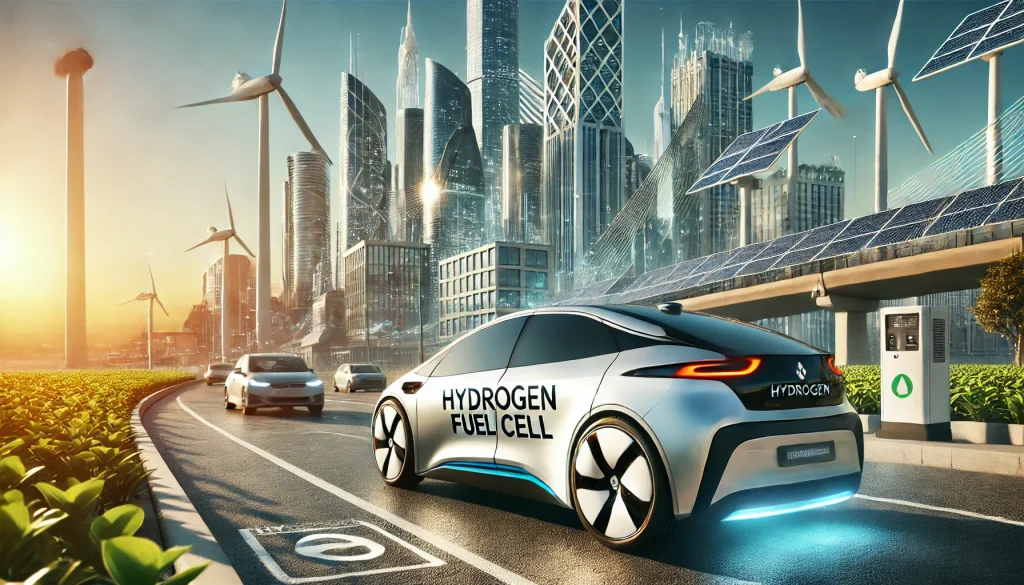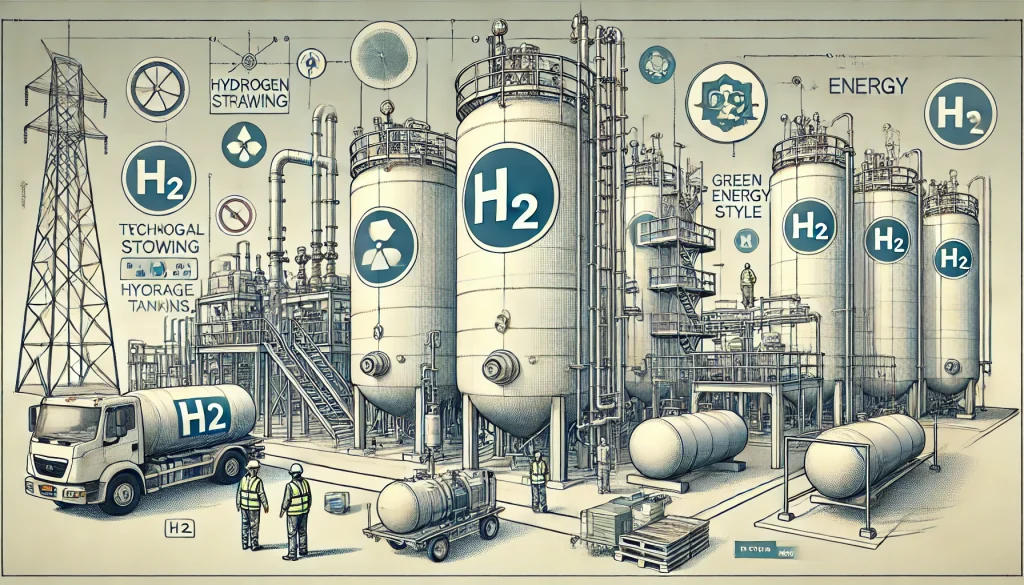Hydrogen is the most abundant element in the cosmos and is the Future of Sustainable Energy . It’s also the most abundant element on Earth. But how can we use it to power our world?
Table Of Content
- Introduction
- Hydrogen Offers Countless Possibilities
- Demonstration Project Could Kickstart Development
- Achieving Commercial Viability
- Conclusion
- FAQ
- You May Also Like
- External Links
An important takeaway from the recent global energy price issue is the need to diversify supply sources rather than relying on a handful of (often unreliable or politically controlled) providers.
Hydrogen presents us with an opportunity to create a system that is more perfect because it is based on variety from the start; a “Big Hydrogen Grid” that is based on a mixture of large and small providers; a network that is not necessarily reliant on certain natural resources. The clean hydrogen process has the potential to be implemented anywhere in the world with access to natural gas, near carbon capture storage facilities or industry, on agricultural estates with access to feedstock for biogas, and other sites with anaerobic digesters.

Hydrogen Offers Countless Possibilities
Hydrogen is a versatile energy source with endless applications. The infrastructure to create and use hydrogen as a fuel with no carbon emissions is currently in place.
A network of this variety will be indispensable when it comes to satisfying the need for a global net-zero energy solution. The transportation and airline industries, as well as the steel, cement, and paper industries, would all greatly profit from tapping into hydrogen supplies. In an era where there is a greater reliance on renewables, the national electrical system in the United Kingdom might benefit from having access to a hydrogen network to better handle the early evening energy drain. Hydrogen may be more expensive in principle, but it really costs less during rush hour.s
When it comes to the production of sustainable energy, a large-scale hydrogen network represents a significant opportunity for new and diverse businesses to enter the market. Now is the time for governments to set clear goals for hydrogen production and practical applications, indicating which technologies will be prioritised for investment as part of long-term energy plans and inspiring greater confidence among investors and the business community around the world. Or, ultimately, there are not going to be substantial enough supplies, or the trustworthy localised supply, needed to encourage and support the move.
Demonstration Project Could Kickstart Development
Cranfield University in the United Kingdom is home to a new government-backed project to construct the world’s largest biomass hydrogen plant, which will showcase the possibilities for the deployment of clean hydrogen processes anywhere in the globe. Helical Energy, Bioenergy Infrastructure Group, GTI Energy, Petrofac, and Origen Power have joined forces to create Bio-HyPER to showcase a cutting-edge hydrogen production method.
Funding for H2 BECCS has a broader goal of proving that the generation of biomass-derived hydrogen combined with carbon capture is a viable option for the United States. These include the improvement of syngas quality for its use in hydrogen generation, the development of advanced gasification technology components, and the creation of new biohydrogen technologies that can be combined with carbon capture. Feedstock pre-processing refers to the development of low-cost, energy- and material-efficient technologies that optimise biogenic—biomass and waste—feedstocks for use in advanced gasification technologies (through, for example, dark fermentation, anaerobic digestion, or wastewater treatment).
The HyPER pilot plant (https://hyperh2.co.uk) is a clean hydrogen generation method based on Sorption Enhanced Reforming, and Bio-HyPER is a feasibility study into this approach that evaluates the possibility of merging advanced gasification technologies with biogas feedstocks. As part of this initiative, a 1-MWth hydrogen production pilot plant will be modernised and placed into operation on campus, to create a novel clean hydrogen fuel (meaning an ultra-low release of CO2).
The principle behind HyPER is a process that is small in footprint but can be scaled up to very large plants, making it ideal for direct hydrogen production. Because conventional steam methane reforming requires an additional and costly step—capturing CO2—it has the potential to create high-purity hydrogen at up to 30% lower cost.
So far, traditional technologies have been limited in terms of the amount of CO2 emissions that can be avoided without costs that impair the feasibility of the model. Given the pressurised nature of the product streams, the novel process has the potential to be more cost-effective and efficient than competing methods.

Achieving Commercial Viability
It is expected that by 2050, once the process has been ramped up, it would be able to create a sizeable amount of hydrogen to meet the demands of the United Kingdom. Hydrogen may be produced in the HyPER demonstration facility using sorption-enhanced reforming at a Levelized cost that is 20% to 30% lower than that of a traditional hydrogen production facility, while the facility itself costs 50% less to construct. Carbon emissions are lowered by 97%.
Bio-mission HyPER is to investigate the viability of replacing natural gas with alternative feedstocks by studying the effects on reactor performance, efficiency, and the generation of electricity from waste heat. In turn, researchers will consider the big picture, considering factors like market viability, the environmental and economic potential of various biogas choices, and the necessity for any necessary reactor changes.
Strengthening our energy infrastructure is crucial to bringing about a more sustainable future. This necessitates the availability of a wide range of supplementary energy sources, including advances in hydrogen technology.
Conclusion
However, the potential for major benefit in terms of zero-emission to climate has drawn academics for its early development and progress toward enhancing more general adoption. To boost the use of hydrogen as a transportation fuel, governments around the world must coordinate their energy needs for the future. The first steps toward a hydrogen economy, which ensures energy security, may surely be facilitated by policy and regulatory measures and increased financing for research and commercialization activities around the world.

FAQ
Here’s why hydrogen will power our world in the long run.
Hydrogen is less poisonous and easier to disseminate than natural gas, but it is also more flammable due to its low ignition energy and wide range of flammable concentrations in the air.
How can hydrogen play a part in a sustainable energy future?
It is non-toxic, light, reactive, and does not emit any carbon dioxide upon combustion. Hydrogen’s potential to decarbonize energy use has been widely recognised. How? It can be integrated into our current energy system to drastically cut down on carbon dioxide production.
Could hydrogen fuel cells represent the next generation of sustainable power sources?
Hydrogen is projected to be the third most important energy resource behind renewables and maybe nuclear power in a post-fossil fuel era.
You May Also Like
- WHAT’S THE DIFFERENCE BETWEEN A FUEL CELL VEHICLE AND A HYDROGEN-ON-DEMAND VEHICLE?
- HYDROGEN ON DEMAND FOR VEHICLES
- HOW HYDROGEN COULD BE THE FUTURE OF GREEN STEEL
- THE NEW HYDROGEN PRODUCTION METHOD NO-ONE IS TALKING ABOUT
- THE ‘SUPERHYBRID’ PROJECTS IN AUSTRALIA HELP WITH HYDROGEN GENERATION
